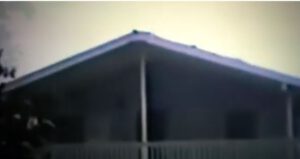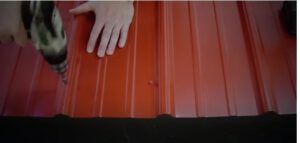The Best Roofing Material for High-Wind Areas in Australia
 Australia’s diverse landscape is subjected to a range of weather conditions, including areas that regularly experience high winds. Choosing the right roofing material in these locations is crucial to ensure longevity, safety, and resilience. Here, we delve into what constitutes the best roofing material for high-wind areas in Australia.
Australia’s diverse landscape is subjected to a range of weather conditions, including areas that regularly experience high winds. Choosing the right roofing material in these locations is crucial to ensure longevity, safety, and resilience. Here, we delve into what constitutes the best roofing material for high-wind areas in Australia.
Understanding Australian Weather Conditions
Before diving into the specifics of roofing materials, it’s important to understand Australia’s unique meteorological challenges. The country is frequently subject to cyclones in the north, while the southern regions often experience severe storm events, including gale-force winds. These conditions can severely test the mettle of roofing materials, making the choice of the right product paramount.
Considerations for Roofing in High-Wind Areas
There are several key factors to consider when choosing roofing materials for high-wind areas:
- Wind Resistance: Look for materials rated for high-wind resistance. They should be able to withstand not just regular wind speed but also unexpected gusts.
- Impact Resistance: Debris carried by high winds can cause significant damage. Therefore, a good roofing material should have high impact resistance.
- Durability: The material should be able to withstand harsh weather conditions for a long period without degradation.
- Installation: Proper installation is key to ensuring that roofs hold up under intense wind conditions. Even the best materials can fail if not installed correctly.
The Best Roofing Materials for High-Wind Areas
Metal Roofing
In the context of high-wind areas, metal roofing stands out as a top contender. It’s lightweight, durable, and resistant to extreme weather conditions. Metal roofs, including those made from steel, aluminum or zinc, are rated for high-wind resistance, making them ideal for areas prone to cyclones or severe storms.
One of the key advantages of metal roofing is its interlocking panel design. This feature, coupled with proper installation, enables it to resist strong winds. Metal roofs also have a high impact resistance, making them resistant to damage from wind-borne debris.
Concrete and Clay Tiles
Concrete and clay tiles are another viable option for high-wind areas. These materials are incredibly durable and can withstand both high winds and flying debris. However, they are significantly heavier than metal roofs, which means the roof structure needs to be strong enough to support them.
One of the key factors that make concrete and clay tiles wind-resistant is their weight. They are hard to lift, even in the face of severe wind conditions. Additionally, their interlocking design contributes to their wind-resistance capability.
However, these tiles can break if hit by larger debris. Therefore, the risk of damage is higher compared to metal roofs.
Fibre Cement Tiles
 Fibre cement tiles are a relatively new entrant in the roofing industry. They are made by combining cellulose, sand, and cement, offering a good balance between lightweight and durability. They have high wind and impact resistance, making them suitable for high-wind areas.
Fibre cement tiles are a relatively new entrant in the roofing industry. They are made by combining cellulose, sand, and cement, offering a good balance between lightweight and durability. They have high wind and impact resistance, making them suitable for high-wind areas.
Fibre cement tiles have an interlocking design, similar to metal and concrete/clay tiles, which helps them resist wind uplift. These tiles are also resistant to rot, fire, and insect damage, making them a long-lasting option.
Flat Roofs
Flat roofs typically consist of rubber membranes, with a few extra components added for more protection. Rubber membranes can be made from EPDM (ethylene-propylene-diene monomer), TPO (thermoplastic olefin), PVC (polyvinyl chloride) or BUR (built-up roofing).
EPDM membranes are the most popular for flat roofs, as they provide excellent UV and ozone resistance. They’re also fire retardant and very durable, making them a great choice for long-term protection. TPO membranes are another popular option, offering superior flexibility and puncture resistance.
PVC membranes offer excellent chemical and weather resistance, while BUR membranes are most suitable for sloped roofs.
The Importance of Proper Installation
No matter how wind-resistant or durable the roofing material is, proper installation is key to its performance. Australian standards and building codes provide guidelines for the installation of roofs in high-wind areas. They cover aspects such as fixing methods, the spacing of screws or nails, and the use of wind clips.
In conclusion, while metal roofing, concrete and clay tiles, and fibre cement tiles all have high wind resistance, the best material choice would depend on several factors, such as the specific location, the structural strength of the building, cost, and personal aesthetic preferences. It is always recommended to consult with a professional roofer who is familiar with local weather conditions and building codes to make the best choice.